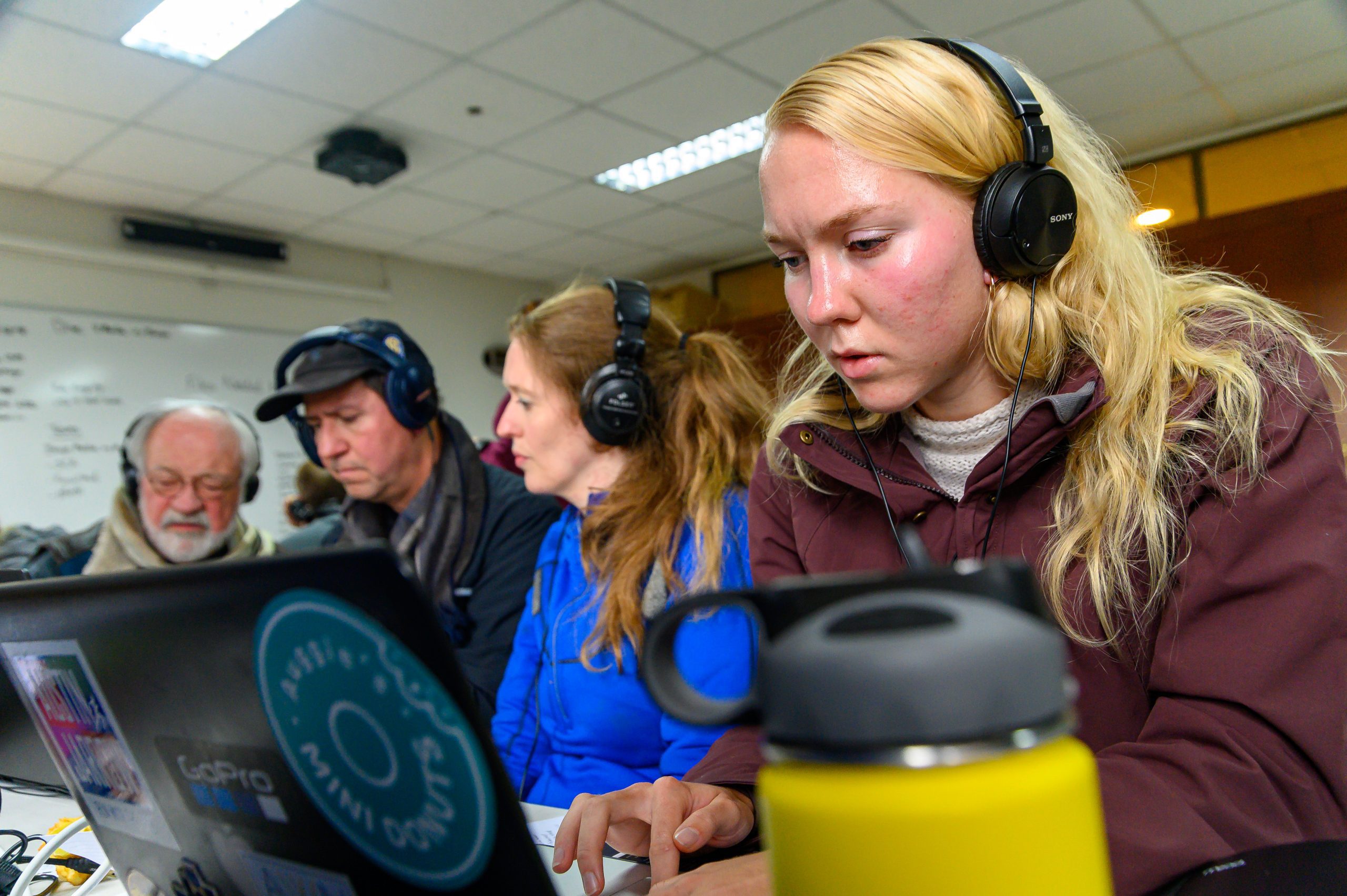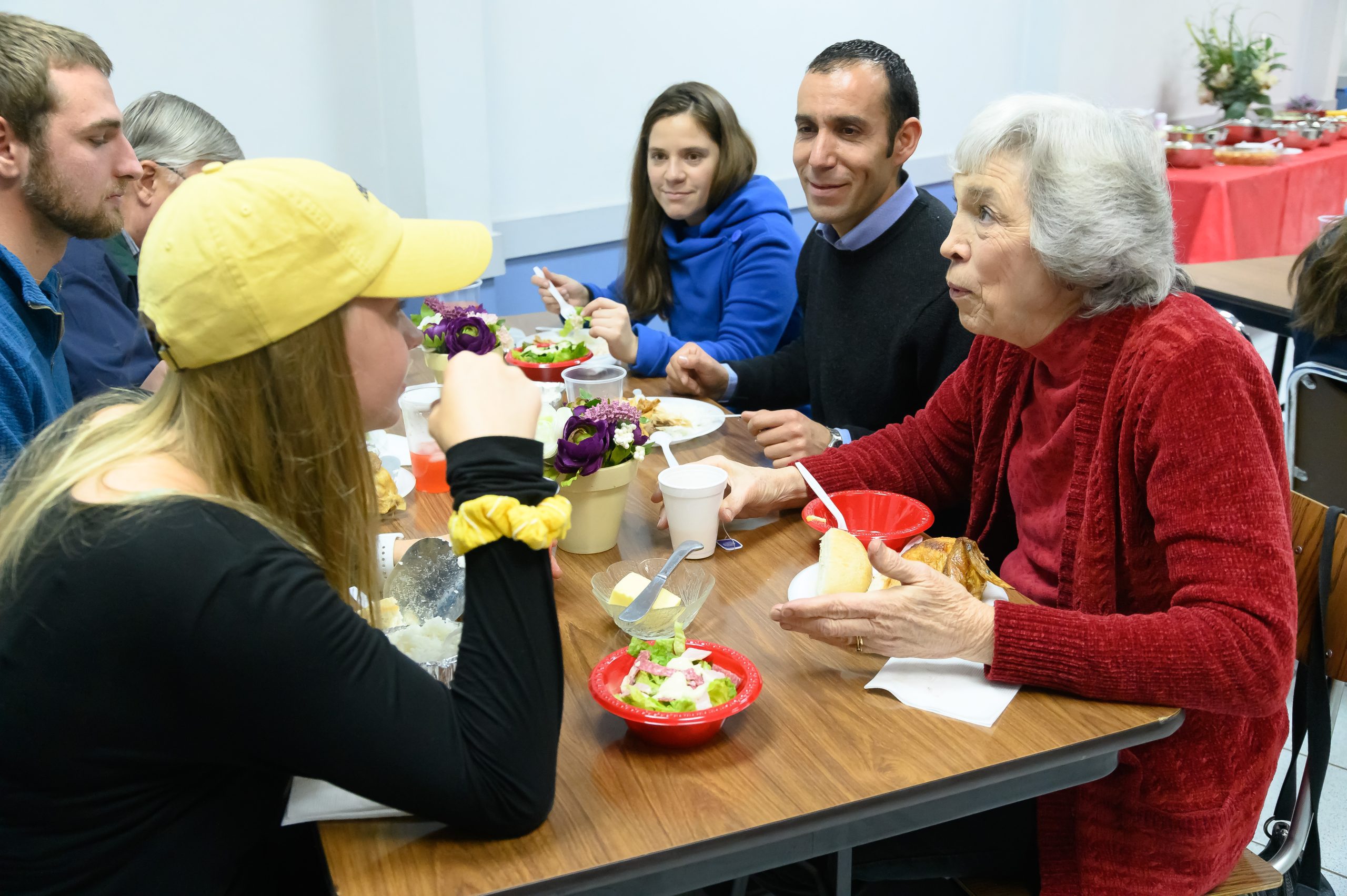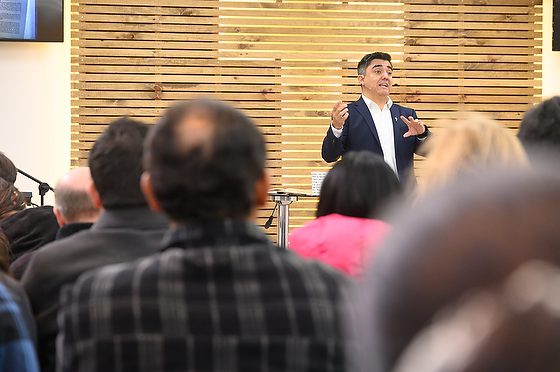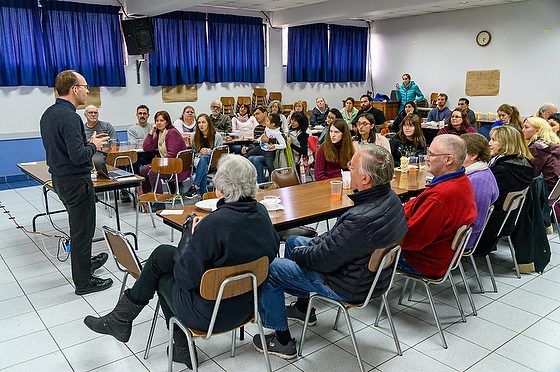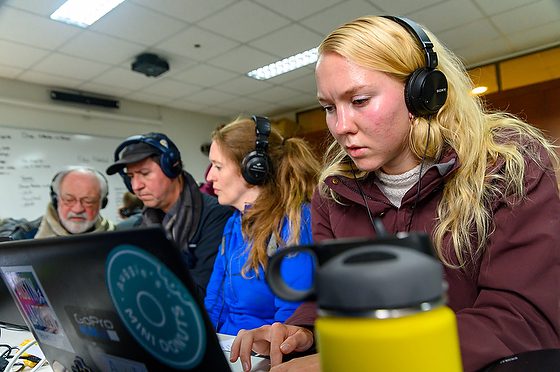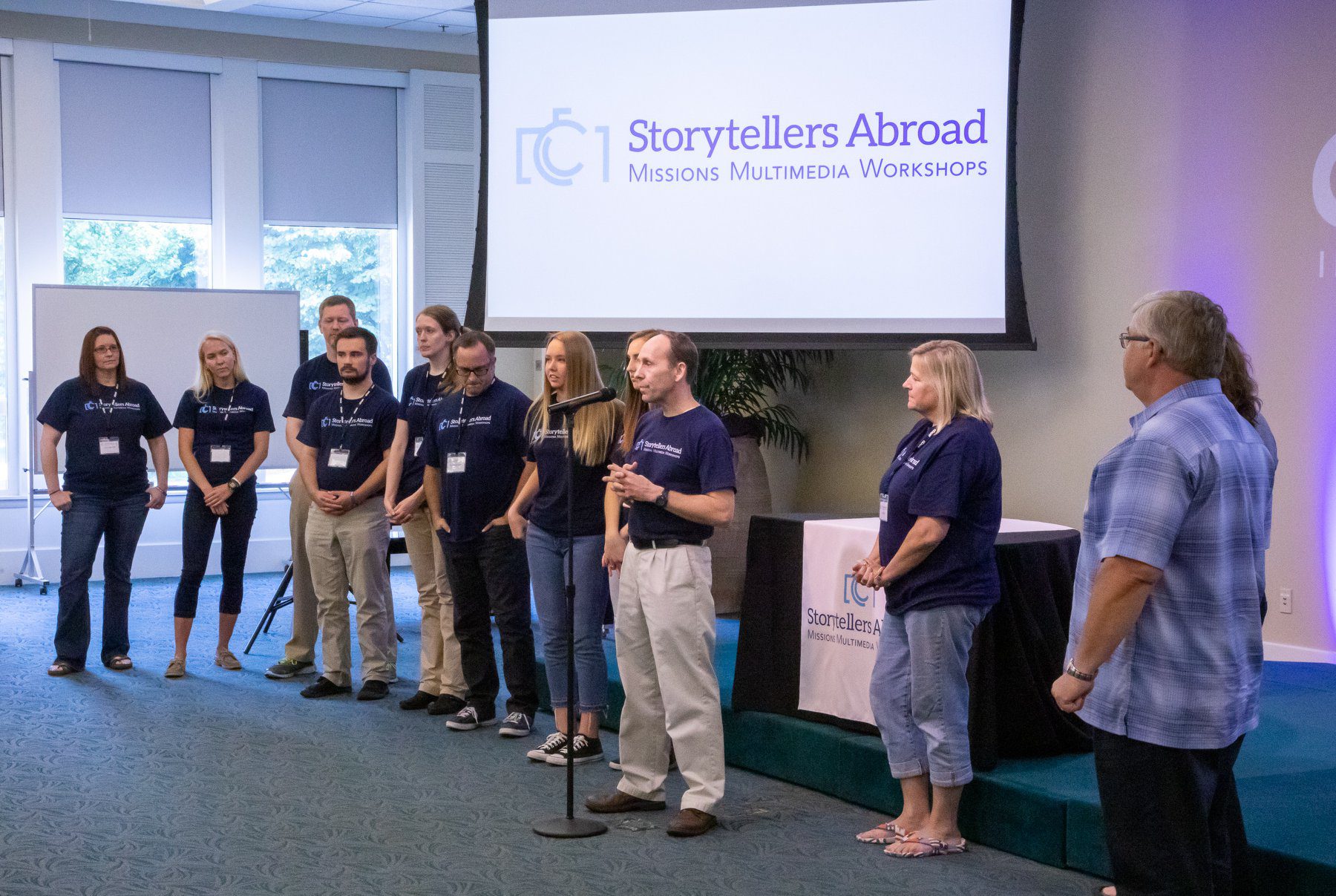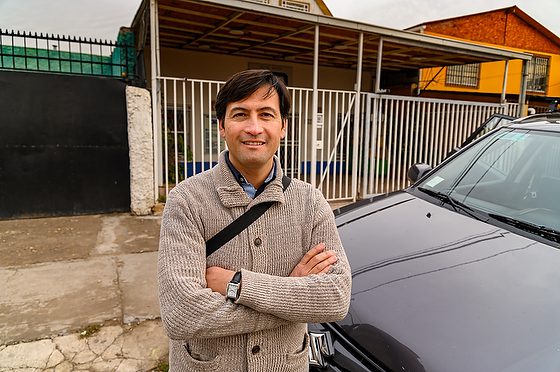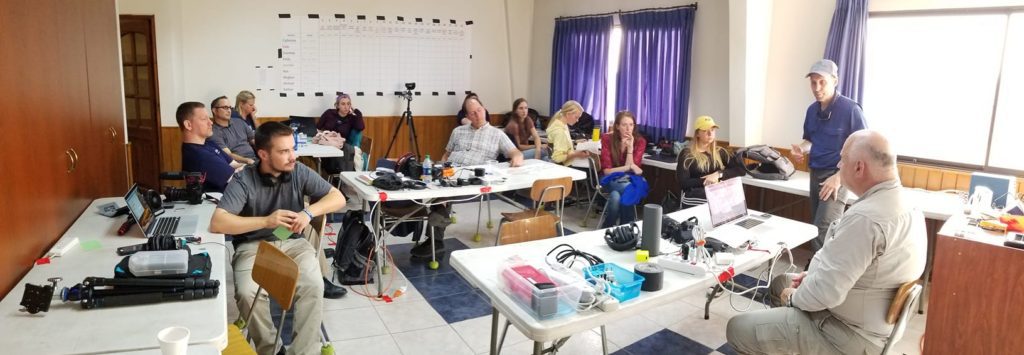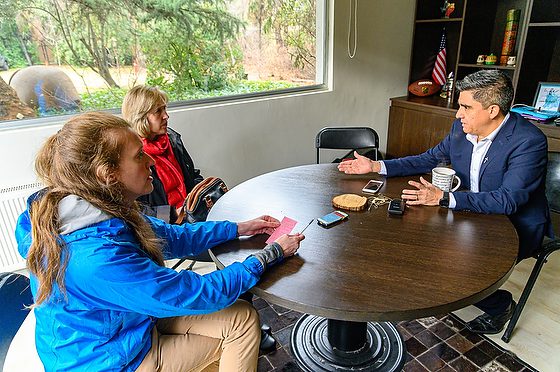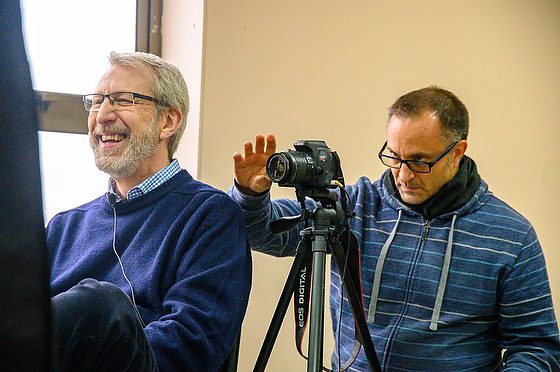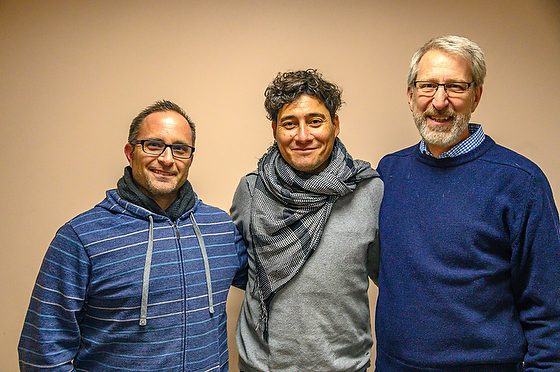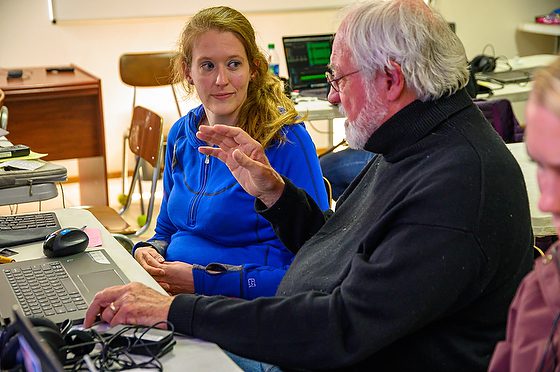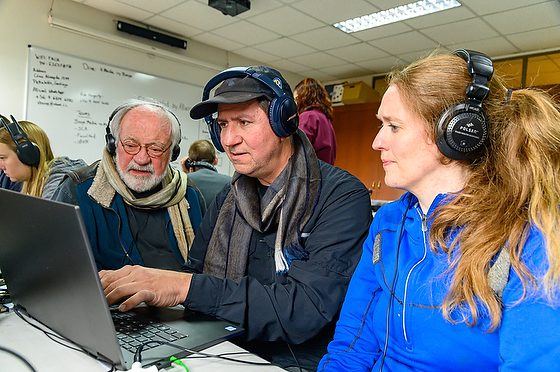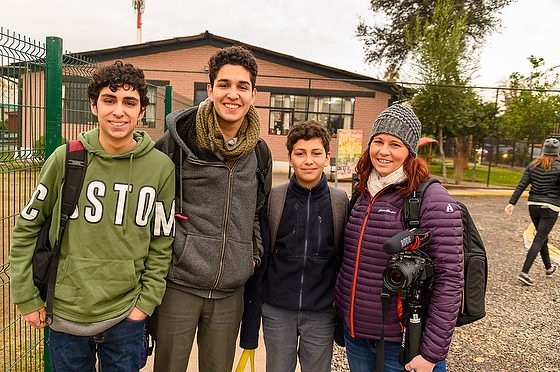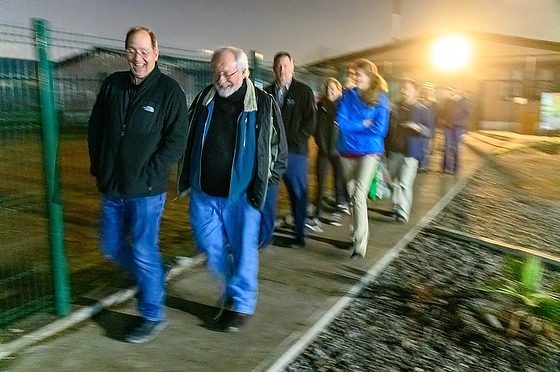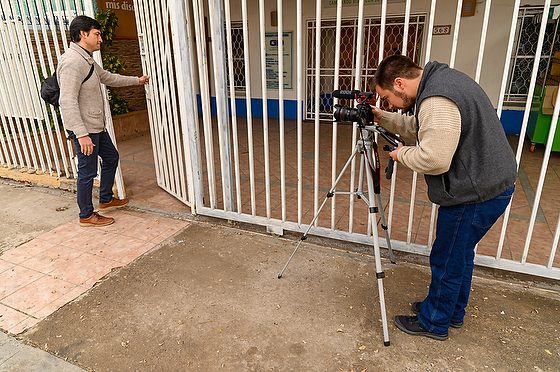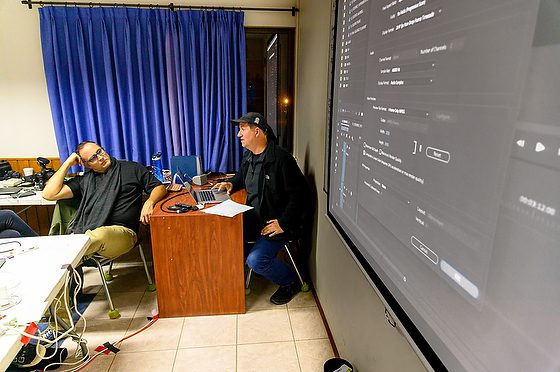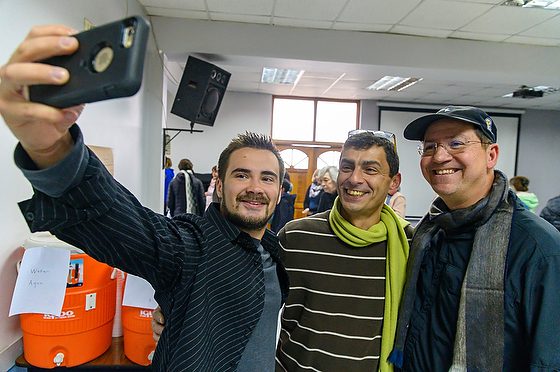Emily Tromp, in the foreground, worked hard on her story during our Storytellers Abroad Multimedia Missions Workshop in Santiago, Chile. [NIKON Z 6, VR Zoom 24-105mm f/4G IF-ED, Mode = Aperture Priority, ISO 4500, 1/100, ƒ/5.6, (35mm = 28)]
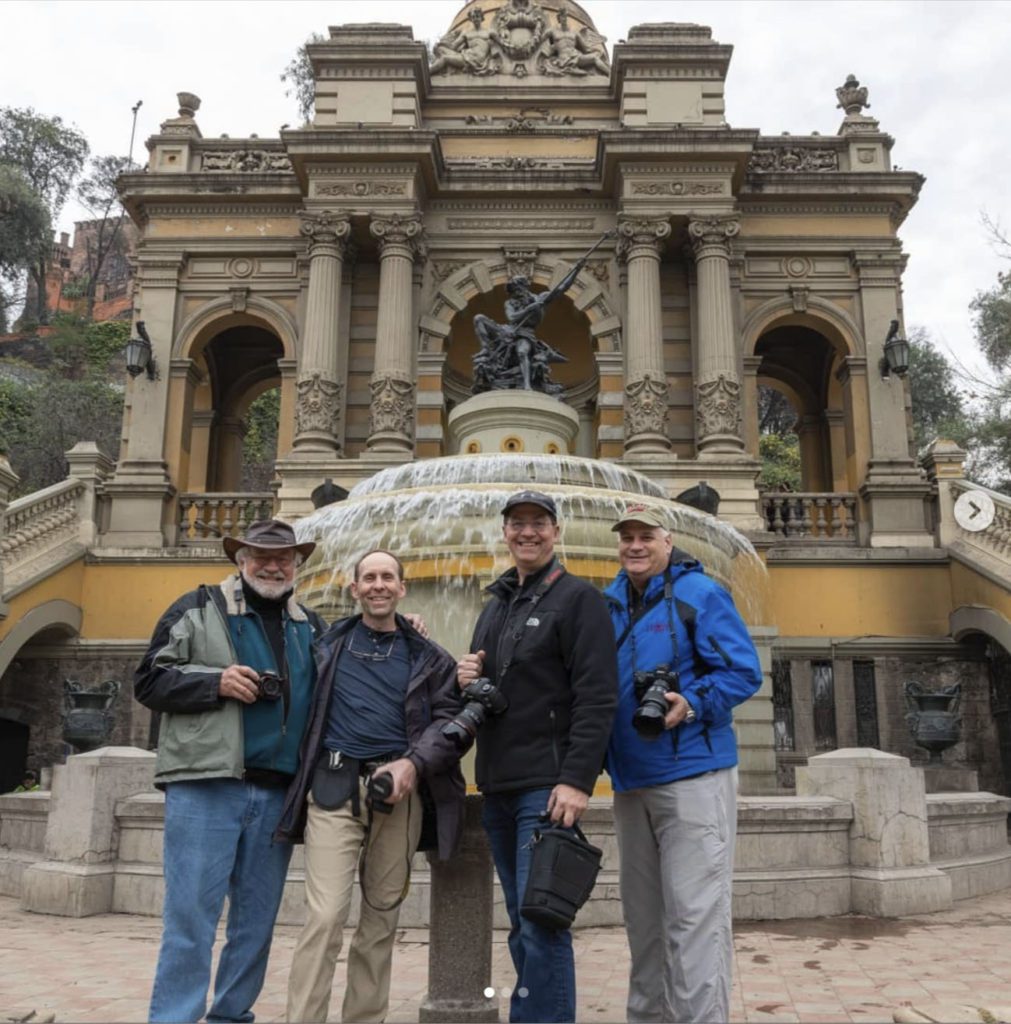
Before the workshop starts for participants, some coaches go early to the country and lay the foundation for the workshop. We work on logistics that involve housing, food, and transportation for the workshop.
The core of this time is finding stories. We talk with the missionaries and found out what needs they have right now. These are things like a building, money for something, and people.
It is a list of wants and needs. The problem with this list is there is nothing emotionally engaging to it.
WHY?
We then ask the critical question, “Why do you need this?” They tell us what they can do if they get those resources. Often those answers are pretty generic. “We can help more people” is a standard answer.
Can you give us an example of a life changed by your ministry that you need more support for? This is when we start to find those stories.
The teacher/missionaries at the Santiago Christian Academy shared how throughout the school, they were doing evangelism of families. Some families need help with scholarships, and individuals like you and churches can also reach more people with the Gospel.
This is one of those stories.
Storyteller Emily Tromp
Storyteller Emily Tromp shares the story of Maria Paz Gonzalez, a single mother who lives with her daughter, Antonia, in Ñuñoa, Chile. Maria has dealt with a great deal of adversity regarding her health and has struggled with heart issues that have impacted her ability to work. Due to financial difficulties arising from her medical needs, she did not believe she could afford to send her daughter to Santiago Christian Academy. Still, thanks to the “SCA Student Fund,” the school has been able to cover the costs of Antonia’s education. Despite continued struggles with her health, Maria keeps a positive outlook on life and thanks God for everything he has given her.
To support the student fund, go to abwe.org/give and search for Santiago Christian Academy Student Fund.
Maybe you are a storyteller but have never done a mission story. We are planning workshops right now for next year. Go to the Storytellers Abroad Multimedia Missions Workshop website and start the process so we can alert you to the trips and dates for next year.
The workshop is designed for those with a working knowledge of photography and some basic writing skills. Many of the past workshop participants worked on their college newspapers, studied communications in college, or worked in the industry.
The workshop is designed around doing what a seasoned pro storyteller would do to tell stories for a missions agency. Our coaches have been working on missions for years. I grew up in missions and have professionally done mission storytelling since 1984.
Here are some of the things we address and this is not a complete list:
- Identifying the Audience
- Identifying the Client
- Navigating the politics of missions organizations
- Cross-cultural issues
- Difference between using logic and emotions to tell stories
- Why you need to know the story before hitting the record button
- Understanding how Human Voice, Words, Visuals, and Music can all tell a story more effectively
- Having a “REAL DEADLINE” and delivering a finished story to the client
- Coaches share their call to “Missions Storytelling.”
- Deep dive into a person’s life that you get to tell their story

